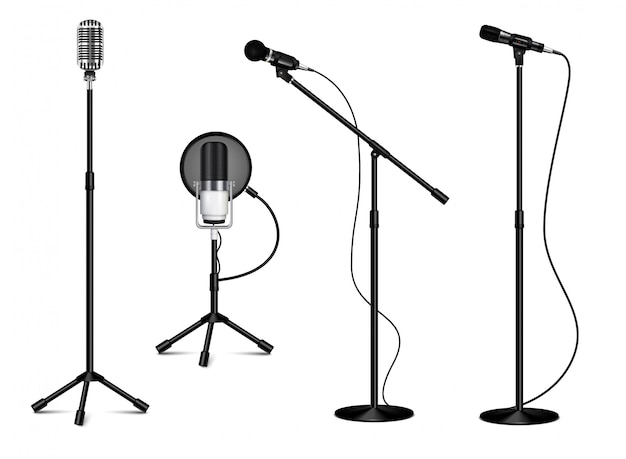The Magic of Ribbon Microphones: An In-depth Look
If the term “ribbon microphone” seems alien to you or if you’re on a quest to discover the ultimate microphone, this article is your one-stop-shop. Here, we will dive into the captivating world of ribbon microphones, one of the most admired types of microphones, also referred to as ribbon velocity microphones.
Ribbon microphones have a fascinating origin. They were birthed in the realm of acoustics in the early 1920s, thanks to the genius minds of Walter H. Schottky and Erwin Gerlach at Telefunken. The world saw the first commercially available ribbon mic, the Photophone Type PB-31, in the early 1930s, introduced by Harry F. Olson at RCA.
Ribbon microphones have been game-changers in the field of sound recording due to their unique capacity to pick up the minutest details in high frequencies, setting them apart from condenser and dynamic microphones. Their growing popularity in the broadcasting industry is a testament to their superior qualities. Wes Dooley, founder of AEA microphone, offers an insightful definition of ribbon microphones: they “listen like your ears”.
This article aims to enrich your understanding of ribbon microphones by unraveling their applications and operational mechanics. By the end of this read, you’ll be well equipped to employ a ribbon microphone effectively and appreciate its unique charm.
Unraveling the Magic of Ribbon Microphones
Ribbon microphones function differently from traditional microphones. Instead of a moving coil, they utilize an extremely thin metal ribbon (usually made of aluminum, Dur aluminum, or nanofilm) situated between the positive and negative poles of a powerful magnet. This ribbon, acting as both a diaphragm and transducer, captures sonic vibrations and converts them into electrical signals. Thus, they are sometimes called velocity microphones.
Their capacity to detect and capture the most delicate details at high frequencies has endeared them to recording and broadcasting studios, leading to their widespread adoption in these industries. Ribbon microphones render a very natural, smooth, and transparent sound, often described as hearing “like your ears” by sound experts.
Moreover, ribbon microphones feature a bidirectional, or figure 8, polar pattern, meaning they can capture sound from both the front and back. This characteristic made them the microphone of choice for vintage radio and TV talk-show hosts since one microphone could pick up the conversation from both sides.
Ribbon microphones don’t require phantom power or any source of electrical power to operate because they are passive devices, equipped with an internal transformer. However, this also means that they are vulnerable to damage from phantom power. They require a quiet microphone preamp with ample clean headroom and gain, given their low output signal.

Where and When to Use Ribbon Microphones
Ribbon microphones shine in various applications due to the sheer transparency and detail of the sound they recreate. Let’s look at where these wonderful tools find their usage:
Electric Guitars: Ribbon microphones produce a smooth, powerful sound for electric guitars, making them equally effective in studio recording and live performances. This attribute has endeared them to musicians, producers, and engineers alike.
Vocals: Ribbon microphones offer a warmer, more authentic sound, making them a superb choice for vocal recordings. They can further enhance the high-frequency input during vocal editing.
Stereo Recording: The Blumlein-pair technique, a method of stereo recording developed by Alan Blumlein in 1931, employs two bidirectional ribbon microphones angled at 90 degrees from each other, making ribbon microphones a favorite for such recordings.
Drums: Ribbon microphones are highly effective for drum recording, requiring only one additional kick drum microphone for high-quality sound capture.
Horns, Woodwinds, and Brass: Ribbon microphones excellently capture the sound of horns, woodwinds, and brass, offering an unparalleled, warm, and authentic sound.
Strings: Ribbon microphones, particularly stereo AEA R88 or mono R84, are favored for recording strings. In small, atmospheric rooms, they offer warmth and character, although their accuracy may suffer with softer sounds.
Advantages and Disadvantages of Ribbon Microphones
Ribbon microphones boast several unique characteristics that set them apart from other microphones. The warm, round, natural, and smooth sound, their bidirectional polar pattern, the variety of sounds they can create due to their ribbon diaphragm, their versatility in applications, and their capability to perform the same applications as condenser mics, are some of their significant advantages.
However, they do come with some disadvantages. Their delicate and fragile nature due to the thin aluminum diaphragm requires extra caution during handling. They are also pricier than dynamic and condenser microphones, have a lower output, and need special care during storage to avoid distortion and subsequent sound quality deterioration.
Caring for Your Ribbon Microphone
Given their fragile nature and higher cost, it’s essential to treat ribbon microphones with utmost care. Keeping them away from heat, light, dust, strong wind, and any strong directional blast of air is crucial. Using a mic stand, employing a pop filter during vocal recording, and storing them vertically can prevent damage. Furthermore, avoiding behaviors like sneezing or coughing in front of the mic can prolong its life.
In Conclusion
Ribbon microphones, while more delicate and expensive than their dynamic and condenser counterparts, offer a warm, natural sound that has quickly made them the favored choice among engineers, producers, and artists. The key is handling these masterpieces with care and respect for their delicate nature. With proper use and maintenance, a ribbon microphone is a formidable tool in the realm of sound recording and broadcasting, transforming the way we listen and perceive sound.




